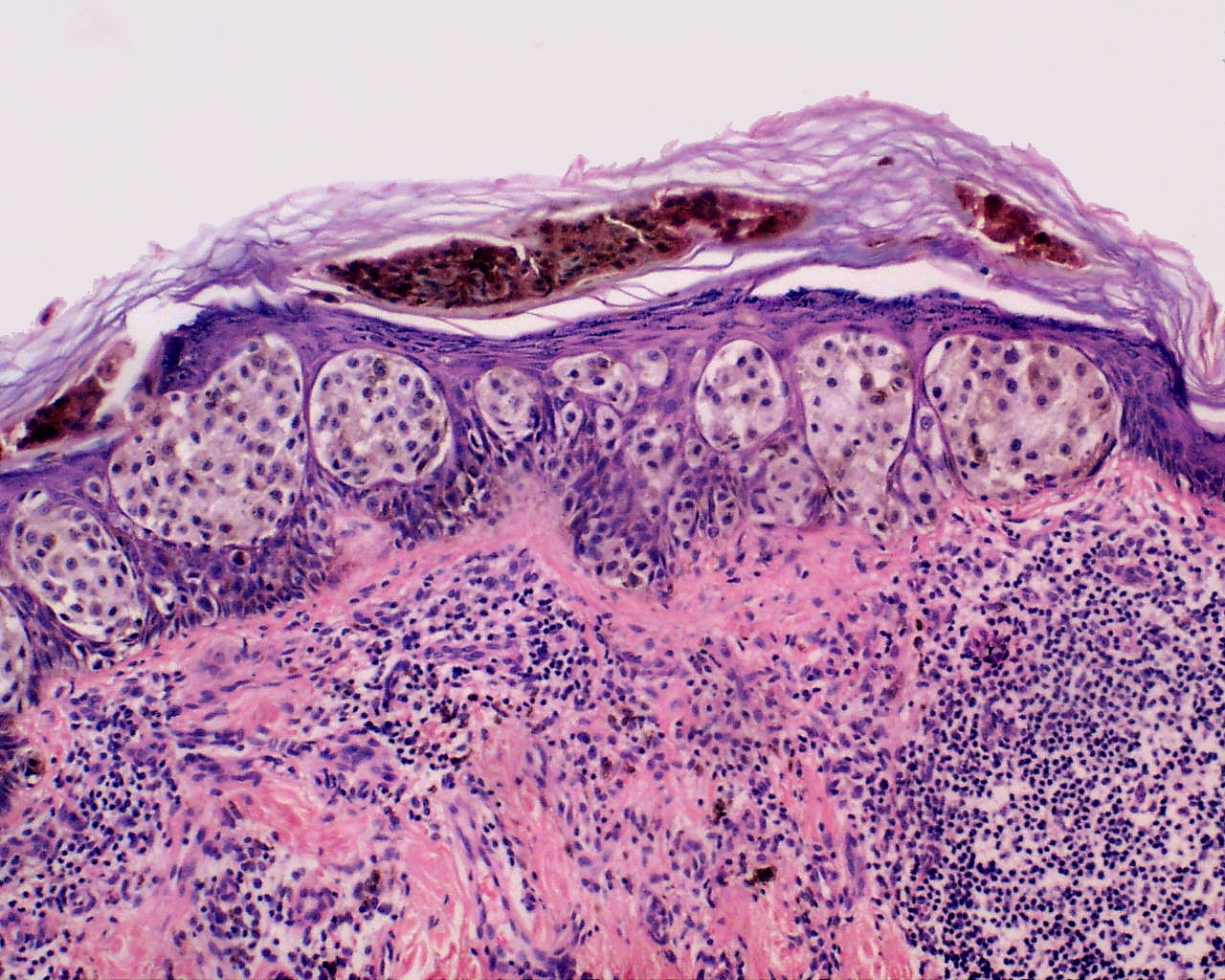In a work led by Jean-Christophe Marine (VIB, KU Leuven) we contributed to the characterization of the lineage-specific long non-coding RNA Sammson. Sammson is only expressed in melanoma cells. When Sammson’ expression is shut, melanoma cells die, principally of loss of mitochondrial function.
Focal amplifications of chromosome 3p13–3p14 occur in about 10% of melanomas and are associated with a poor prognosis. The melanoma-specific oncogene MITF resides at the epicentre of this amplicon1. However, whether other loci present in this amplicon also contribute to melanomagenesis is unknown. Here we show that the recently annotated long non-coding RNA (lncRNA) gene SAMMSON is consistently co-gained with MITF. In addition, SAMMSON is a target of the lineage-specific transcription factor SOX10 and its expression is detectable in more than 90% of human melanomas. Whereas exogenous SAMMSON increases the clonogenic potential in trans, SAMMSON knockdown drastically decreases the viability of melanoma cells irrespective of their transcriptional cell state and BRAF, NRAS or TP53 mutational status. Moreover, SAMMSON targeting sensitizes melanoma to MAPK-targeting therapeutics both in vitro and in patient-derived xenograft models. Mechanistically, SAMMSON interacts with p32, a master regulator of mitochondrial homeostasis and metabolism, to increase its mitochondrial targeting and pro-oncogenic function. Our results indicate that silencing of the lineage addiction oncogene SAMMSON disrupts vital mitochondrial functions in a cancer-cell-specific manner; this silencing is therefore expected to deliver highly effective and tissue-restricted antimelanoma therapeutic responses.
Published in Nature (2016) Vol 531, n°7595, pp 518-522. doi:10.1038/nature17161
